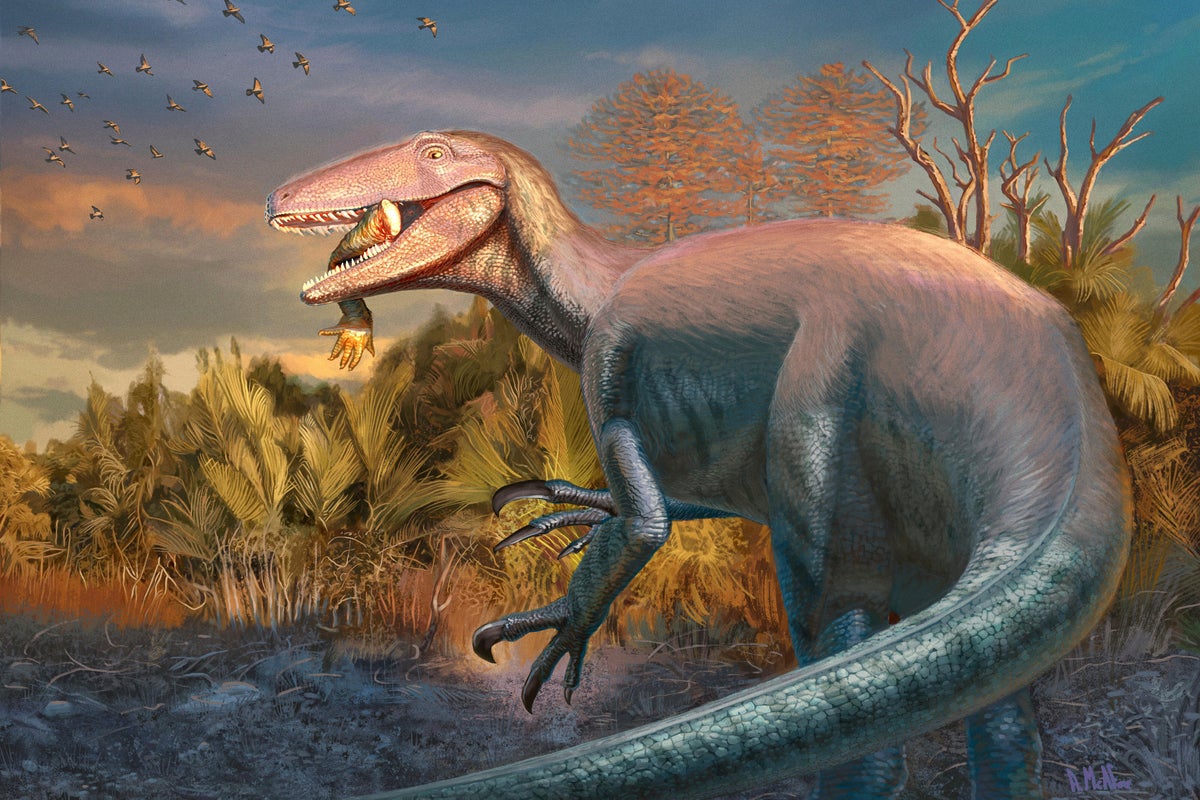- Total News Sources
- 10
- Left
- 7
- Center
- 2
- Right
- 0
- Unrated
- 1
- Last Updated
- 19 days ago
- Bias Distribution
- 78% Left


Megaraptor Found with Crocodyliform Humerus
Argentinian paleontologists described a new megaraptoran theropod, Joaquinraptor casali, from a well‑preserved partial skeleton recovered in the Lago Colhué Huapi Formation in central Patagonia, Argentina. The specimen includes much of the skull, fore‑ and hindlimbs, ribs and vertebrae and is among the most complete megaraptoran fossils yet found. Researchers estimate it measured about 7 m long, weighed over 1,000 kg, lived around 66–70 million years ago, and was roughly 19 years old but not fully grown at death. A crocodyliform humerus was found lodged against the lower jaws and bears bite marks, raising the possibility the animal died while feeding on or struggling with a large crocodyliform, though taphonomic alternatives remain. Its elongated skull, long arms and large sickle‑shaped forelimb claw reinforce interpretations that megaraptorans used oversized, blade‑like forelimb claws rather than T. rex–style crushing bites to handle prey. The find provides new anatomical evidence that fills gaps in megaraptoran morphology and ecology but leaves questions about their precise hunting strategies and broader evolutionary placement.




- Total News Sources
- 10
- Left
- 7
- Center
- 2
- Right
- 0
- Unrated
- 1
- Last Updated
- 19 days ago
- Bias Distribution
- 78% Left
Related Topics
Stay in the know
Get the latest news, exclusive insights, and curated content delivered straight to your inbox.

Gift Subscriptions
The perfect gift for understanding
news from all angles.
